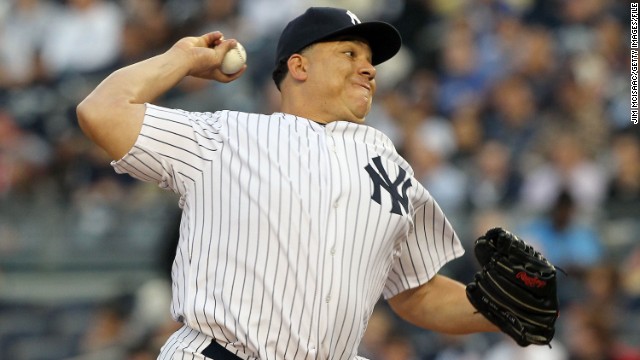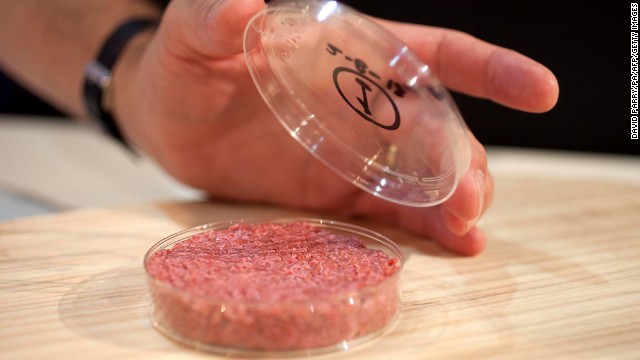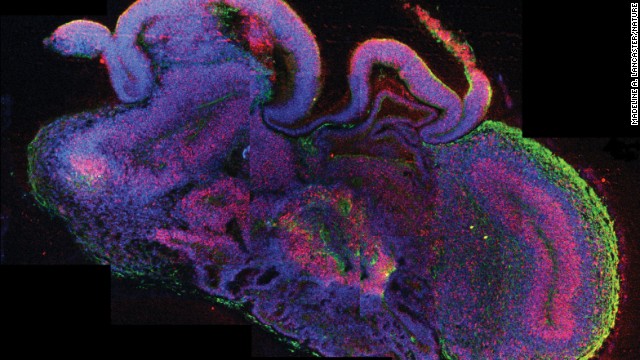 In January 2014, researchers announced they had developed a new method of making stem cells -- by placing skin cells in an acidic environment. But the researchers retracted their papers in July 2014, citing "several critical errors" in their study data. Click through the gallery to learn more about stem cell research.
In January 2014, researchers announced they had developed a new method of making stem cells -- by placing skin cells in an acidic environment. But the researchers retracted their papers in July 2014, citing "several critical errors" in their study data. Click through the gallery to learn more about stem cell research.  Stem cells have the potential to become many different kinds of cells, and can renew themselves through cell division. Scientists view stem cells as a possible gateway to curing many medical conditions, from Parkinson's disease to diabetes. Stem cells are viewed on computer here at UConn Health Center in 2010.
Stem cells have the potential to become many different kinds of cells, and can renew themselves through cell division. Scientists view stem cells as a possible gateway to curing many medical conditions, from Parkinson's disease to diabetes. Stem cells are viewed on computer here at UConn Health Center in 2010.  A closeup of a microscope slide taken in 2000 at the Reproductive Genetics Institute's Chicago laboratory shows transplanted stem cells taken from the umbilical cord blood of a baby named Adam Nash. Adam's sister Molly has a genetic disease called Fanconi Anemia. Their parents wanted to have a child who could be a stem cell donor for Molly. Using in vitro fertilization, doctors created embryos and then tested them for the genetic disease. They chose one that did not have the disorder, which grew into baby Adam. Molly received a stem cell transplant from stem cells from Adam's umbilical cord. Both children are alive today.
A closeup of a microscope slide taken in 2000 at the Reproductive Genetics Institute's Chicago laboratory shows transplanted stem cells taken from the umbilical cord blood of a baby named Adam Nash. Adam's sister Molly has a genetic disease called Fanconi Anemia. Their parents wanted to have a child who could be a stem cell donor for Molly. Using in vitro fertilization, doctors created embryos and then tested them for the genetic disease. They chose one that did not have the disorder, which grew into baby Adam. Molly received a stem cell transplant from stem cells from Adam's umbilical cord. Both children are alive today.  In 1998, then-President Bill Clinton requested a National Bioethics Advisory Commission to study the question of stem cell research.
In 1998, then-President Bill Clinton requested a National Bioethics Advisory Commission to study the question of stem cell research.  In 2000, The National Institutes of Health issued guidelines for the use of embryonic stem cells in research, specifying that scientists receiving federal funds could use only extra embryos that would otherwise be discarded. President Clinton approved federal funding for stem cell research but Congress did not fund it. Above, a Cell Expansion System which is used to grow cells is seen during the 2010 World Stem Cell Summit in Detroit.
In 2000, The National Institutes of Health issued guidelines for the use of embryonic stem cells in research, specifying that scientists receiving federal funds could use only extra embryos that would otherwise be discarded. President Clinton approved federal funding for stem cell research but Congress did not fund it. Above, a Cell Expansion System which is used to grow cells is seen during the 2010 World Stem Cell Summit in Detroit.  In August 2001, then-President George W. Bush announced he would allow federal funding for about 60 existing stem cell lines created before this date. Above, a human stem cell colony, which is no more than 1mm wide and comprises thousands of individual stem cells, grows on mouse embryonic fibroblast in a research laboratory in September 2001.
In August 2001, then-President George W. Bush announced he would allow federal funding for about 60 existing stem cell lines created before this date. Above, a human stem cell colony, which is no more than 1mm wide and comprises thousands of individual stem cells, grows on mouse embryonic fibroblast in a research laboratory in September 2001.  In 2005, Connecticut and Illinois designated state funds to support stem cell research in their states. Above, a woman works on stem cells at the University of Connecticut's Stem Cell Institute at the UConn Health Center in August 2010 in Farmington, Connecticut.
In 2005, Connecticut and Illinois designated state funds to support stem cell research in their states. Above, a woman works on stem cells at the University of Connecticut's Stem Cell Institute at the UConn Health Center in August 2010 in Farmington, Connecticut.  In March 2009, President Barack Obama signed an executive order that removed restrictions on embryonic stem cell research. His action overturned an order approved by President George W. Bush in August 2001 that barred the National Institutes of Health from funding research on embryonic stem cells beyond using 60 cell lines that existed at that time. Above, Obama signs the order.
In March 2009, President Barack Obama signed an executive order that removed restrictions on embryonic stem cell research. His action overturned an order approved by President George W. Bush in August 2001 that barred the National Institutes of Health from funding research on embryonic stem cells beyond using 60 cell lines that existed at that time. Above, Obama signs the order.  In November 2010, William Caldwell, CEO of Advanced Cell Technology, told CNN that the FDA had granted approval for his company to start a clinical trial using cells grown from human embryonic stem cells. The treatment would be for an inherited degenerative eye disease. Above, dozens of packages containing frozen embryonic stem cells remain in liquid nitrogen in a laboratory, at the University of Sao Paulo's human genome research center, in Sao Paulo, Brazil, in March 2008.
In November 2010, William Caldwell, CEO of Advanced Cell Technology, told CNN that the FDA had granted approval for his company to start a clinical trial using cells grown from human embryonic stem cells. The treatment would be for an inherited degenerative eye disease. Above, dozens of packages containing frozen embryonic stem cells remain in liquid nitrogen in a laboratory, at the University of Sao Paulo's human genome research center, in Sao Paulo, Brazil, in March 2008.  In May 2011, stem cell therapy in sports medicine was spotlighted after New York Yankee pitcher Bartolo Colon was revealed to have had fat and bone marrow stem cells injected into his injured elbow and shoulder while in the Dominican Republic. Above, Colon pitches against the Boston Red Sox on in May 2011.
In May 2011, stem cell therapy in sports medicine was spotlighted after New York Yankee pitcher Bartolo Colon was revealed to have had fat and bone marrow stem cells injected into his injured elbow and shoulder while in the Dominican Republic. Above, Colon pitches against the Boston Red Sox on in May 2011.  In February 2012, early research published by scientists at Cedars-Sinai Medical Center and Johns Hopkins University showed that a patient's own stem cells can be used to regenerate heart tissue and help undo damage caused by a heart attack. It is the first instance of therapeutic regeneration. Above, fluid is removed from the knee of a patient to collect adult stem cells by at a clinic in Broomfield, Colorado.
In February 2012, early research published by scientists at Cedars-Sinai Medical Center and Johns Hopkins University showed that a patient's own stem cells can be used to regenerate heart tissue and help undo damage caused by a heart attack. It is the first instance of therapeutic regeneration. Above, fluid is removed from the knee of a patient to collect adult stem cells by at a clinic in Broomfield, Colorado.  In October 2012, Sir John Gurdon and Shinya Yamanaka were awarded the Nobel Prize for Physiology or Medicine for discovering how to make pluripotent stem cells. They both showed that cells could be reprogrammed after they had already specialized. This changed scientists' understanding of how cells and organisms develop. Above, Sir Gurdon speaks at a press conference after being awarded the Prize.
In October 2012, Sir John Gurdon and Shinya Yamanaka were awarded the Nobel Prize for Physiology or Medicine for discovering how to make pluripotent stem cells. They both showed that cells could be reprogrammed after they had already specialized. This changed scientists' understanding of how cells and organisms develop. Above, Sir Gurdon speaks at a press conference after being awarded the Prize.  On May 16, 2013, scientists announced that they had, for the first time, produced embryos using skin cells, and then used the embryos to make stem cell lines. This technique resembles what was used in cloning Dolly the sheep, but the earlier technique could not have led to a fully-cloned human baby. Above, a photo provided by the Oregon Health & Science University shows a stem cell colony produced from human skin cells.
On May 16, 2013, scientists announced that they had, for the first time, produced embryos using skin cells, and then used the embryos to make stem cell lines. This technique resembles what was used in cloning Dolly the sheep, but the earlier technique could not have led to a fully-cloned human baby. Above, a photo provided by the Oregon Health & Science University shows a stem cell colony produced from human skin cells.  On August 5, 2013, the world's first stem cell burger was cooked and eaten in London. The brainchild of Maastricht University's Mark Post, the burger was made of 20,000 small strands of meat grown from a cow's muscle cells and took three months to create and cost $330,000 to develop.
On August 5, 2013, the world's first stem cell burger was cooked and eaten in London. The brainchild of Maastricht University's Mark Post, the burger was made of 20,000 small strands of meat grown from a cow's muscle cells and took three months to create and cost $330,000 to develop.  In September 2013, scientists announced they had created what they are calling "cerebral organoids" using stem cells. These pea-sized structures are made of human brain tissue, and they can help researchers explore important questions about brain development and disorders that occur during these first stages of life.
In September 2013, scientists announced they had created what they are calling "cerebral organoids" using stem cells. These pea-sized structures are made of human brain tissue, and they can help researchers explore important questions about brain development and disorders that occur during these first stages of life.
- In January scientists published an easy, inexpensive way to produce stem cells
- The researchers now say their articles had "several critical errors"
- Investigators categorized the errors as "misconduct"
(CNN) -- It was hailed as a fast, easy, inexpensive and uncontroversial way to produce stem cells.
Scientists took a skin cell and coaxed it into acting like an embryo, producing embryonic-like stem cells that could theoretically be turned into any cell in the body. What was described as a "breakthrough" is how these cells were coaxed -- by placing them in an acidic bath.
The process was developed primarily by researchers at the Riken Center for Developmental Biology in Japan.
 Understanding the stem cell breakthrough
Understanding the stem cell breakthrough  Human cloning: One step closer
Human cloning: One step closer But five months after their studies were published in the journal Nature, researchers are retracting the results.
 Are stem cells curing 'incurable' boy?
Are stem cells curing 'incurable' boy? "Several critical errors have been found in our article," they write in their retraction, which the journal published Wednesday.
 Tasters: Stem cell burgers a bit 'dry'
Tasters: Stem cell burgers a bit 'dry' An investigation into the studies was started by the Riken Center in February. The institution said its investigators "categorized some of the errors as misconduct."
This is not a complete surprise. One of the co-authors of the study called for a retraction in March, because he questioned some of the data that were used in the experiments, which led to the creation of so-called STAP cells (or stimulus-triggered acquisition of pluripotency cells).
In an editorial accompanying the retraction, Nature said that "errors were found in the figures, parts of the methods descriptions were found to be plagiarized, and early attempts to replicate the work failed."
The investigation found that data supposedly representing different cells and different embryos in the study were actually describing the same cells and the same embryos.
"All co-authors of both papers have finally concluded that they cannot stand behind the papers, and have decided to retract them," according to Nature.
No comments:
Post a Comment